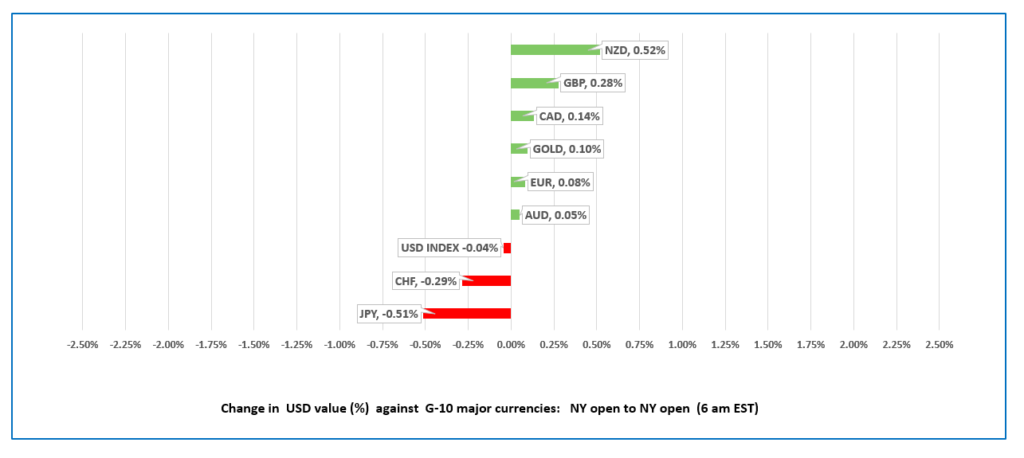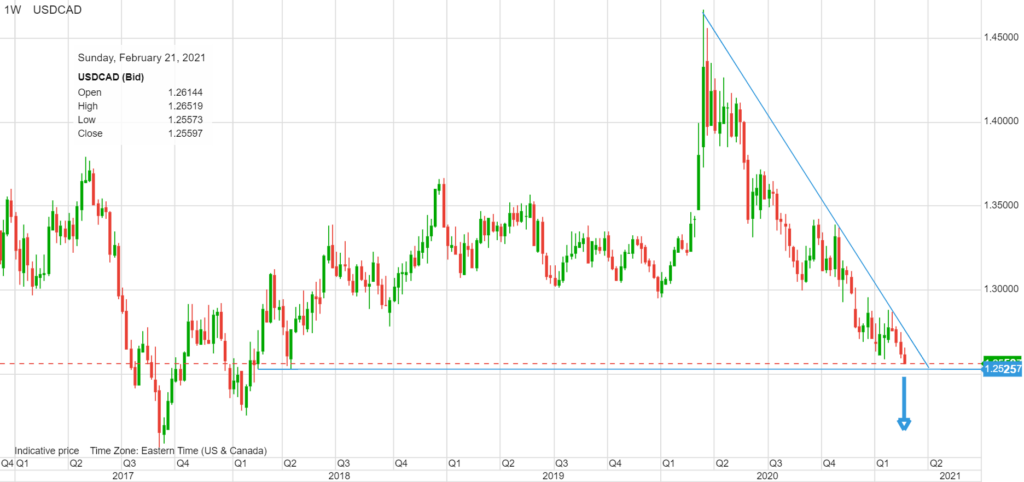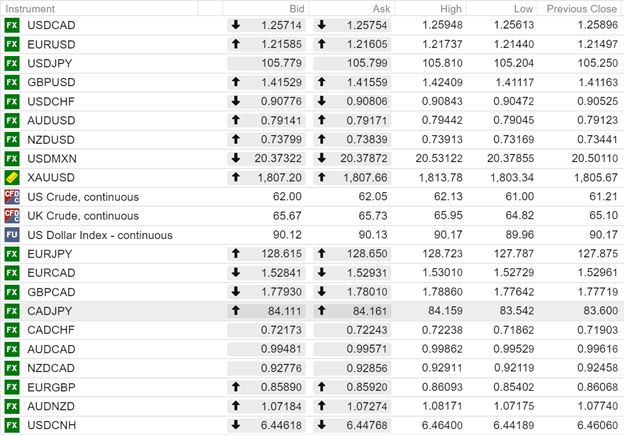
USDCAD open (6:00 am ET) 1.2572-76, Overnight Range 1.2561-1.2595, Close 1.2590

Source: IFXA Ltd/RP
The news was music to the ears of Wall Street. Prices recovered from a serious intraday slump to close flat to slightly lower. Asia traders were nervous, and another steep drop in China’s Shanghai Shenzhen CSI 300 index led to equity index weakness in other regions. European bourses are modestly higher except for the UK FTSE100, which is down 0.19% (as of 6:30 am). S&P500 and DJIA futures point to a positive open on Wall Street.
EURUSD traded uneventfully in a 1.2144-1.2174 range. Topside gains may be hampered by news of a 50% shortfall in deliveries of the Astra Zeneca COVID-19 vaccine in Q2. Traders are already reluctant to drive the single currency higher after ECB officials repeatedly stated that they were “monitoring the currency.” German Q4 GDP was better than expected, falling 2.7% rather than dropping 2.9% as forecast. Chunky option expires between 1.2150 and 1.2180 suggest that range will stay intact until after 10:00 am ET.
GBPUSD spiked in early Asia trading, rising from 1.4125 to 1.4241, for no discernable reason. GBPUSD doesn’t have the deepest liquidity in the early Asia time zone, which suggests that the rally, then plunge was more likely caused by mistake rather than a legitimate flow. GBPUSD continues to benefit from the UK’s aggressive vaccination program, which will allow the UK economy to normalize far quicker than the EU. GBPUSD technicals are bullish and targeting 1.4350.
USDJPY climbed from 105.20 to 105.86 due to the improved risk tone following Fed Chair Powell’s testimony, and the increase in US 10-year Treasury yields from 1.335% to 1.367%,
NZDUSD rallied not because of what the RBNZ monetary policy said, but because of what it didn’t say. Traders were expecting some pushback about the level of NZDUSD, but they said nothing. The RBNZ left monetary unchanged, and NZDUSD rose to 0.7391 from 0.7317.
USDCAD dropped due to broad US dollar selling vs the majors and is back at levels last seen in April 2018. Rising commodity prices and forecasts for higher WTI oil prices due to expectations of a robust US economic recovery are undermining the currency pair, in addition to bearish technicals. Bank of Canada Governor Tiff Macklem sounded like Jay Powell. He said the economy needs considerable stimulus and that the recovery is a “still a long way off.”
USDCAD Technicals: The intraday USDCAD technicals are bearish below 1.2590, looking for a break below support in the 1.2530-50 area to extend losses to 1.2400. A break above 1.2590 would delay the down move but only a decisive break of 1.2750 would negate the downtrend. For today, USDCAD support is at 1.2550 and 1.25200. Resistance is at 1.2590 and 1.2640. Todays Range 1.2520-1.2590
Chart: USDCAD weekly

Source: Saxo Bank
FX open (6:00 am EDT) High, Low, and previous close

Source: Saxo Bank





